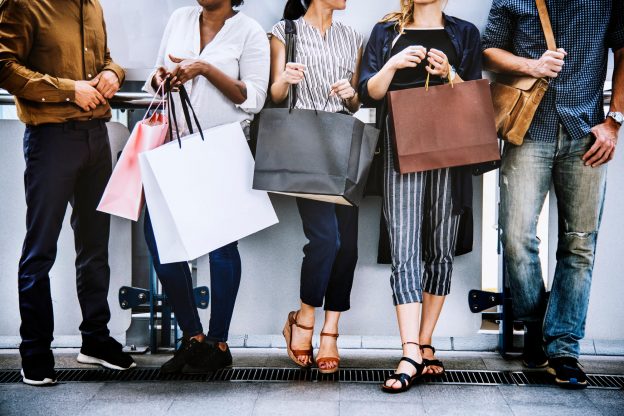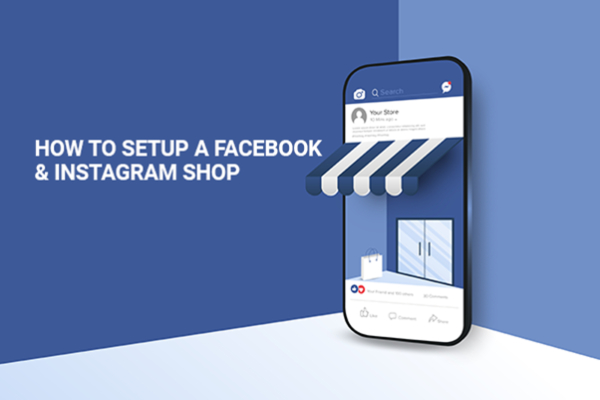Have shopping habits changed forever?

As we emerge from the enforced quiet of the pandemic lockdowns and begin to live our ‘normal’ lives again, the world of retail shopping has opened and we can finally browse the shelves, in person, in a real-life brick and mortar shop. But shopping behaviour has changed over the past 18months. The 21/90 rule of habit-forming behaviour states that it takes 21 days to make a habit and 90 days to make it a permanent lifestyle change. Online shopping is now a lifestyle change for many. The burning question for retailers is whether this new consumerism is an irreversible change. Has the ease and comfort of ordering from home replaced the trip to the High Street? Will browsing online give that retail therapy hit comparable to a Saturday shopping trip? What will shopping look like in a post pandemic future?
Changing Habits
Even before the pandemic hit, retail was going through some huge change partly driven by new technology and partly by customers preferences. The shift to searching for items online prior to any shopping trip had already occurred and retailers from car dealers to hardware stores were investing in e-commerce sites and jostling for a place on the virtual shopping mall. Amazon was already set for world domination as the go-to site for a wide range of products. Online shopping was happening for some products, but it was slow when it came to others. Over the lockdowns, the world fell in love with the phenomenon of having everything from fast food and groceries to fresh oysters delivered to the door. If they didn’t immediately fall in love with it, they did it from necessity and by all indicators found it a satisfactory experience. While shoppers will return to pubs restaurants and certain stores, early reports indicate that they will continue the new habit of searching for good bargains online prior to committing to purchase. They will virtually window shop and purchase online for many items rather than going back to the brick-and-mortar store. There is no doubt that the shift toward online shopping will continue post-pandemic. According to the Mastercard Economics Institute, consumers spent $900 billion more online than in 2020, versus the prior two-year trend. Future trends depend largely on the retail category. There is a lot of pent-up demand for getting back to physical stores for apparel and footwear. However, for lower involvement items like groceries and home care, the shift toward online shopping will be more permanent.
The desire to browse is still strong and this may be the criteria where certain high street shops will win over the online competitor. During a shopping trip, consumers spend way more time in store than they ever do online. Browsing and recreational shopping will definitely return, but to what extent? ‘The physical nature of in-store shopping plays a big part in our desire to browse. A survey by Retail Dive showed that shoppers much preferred the ability to see, touch, feel and try out items over shopping online. New York-based consumer psychologist Peter Noel Murray believes this type of browsing can give us a positive psychological boost. “By sitting in a luxury car at the car dealership, we are vicariously experiencing the emotion of owning a luxury car, which means browsing in and of itself can be a rewarding experience,” he says. And although many browsers walk out of stores without buying anything, that is not always the case. “Browsing offers the opportunity of serendipity, one thing leads to another, and you end up with something you hadn’t thought of buying in the first place.” Shopping is a social activity for many. They enjoy the stimulation of colour, smell, store layouts and the bustle of the retail environment. Savvy retailers will be keeping the online presence vibrant and acknowledging that while some customers choose personal shopping, more will stick to a shopping from home option. In a recent online survey 2 in 5 shoppers surveyed in the UK showed that two in five people intend to carry on purchasing goods online rather than return to stores when they re-open.
Item by Item
Prior to the pandemic closures, discerning consumers were already searching online for deals and price comparison on many big purchases. Car sales were researched carefully from home before any well sanitised test drive took place. House sales have long been dependant on the images and descriptions online and it is rare that a potential buyer will not have visited the sale page for houses multiple times before they actually view the site. There is no reason to imagine that this common-sense approach to large purchases will change. In an extension of this, virtual car sales are happening and the first time the customers sees the car in person is when it is delivered to the door. It is expected that the changing habits of shoppers will be dependent on which product being purchased. In the US, according to the CNBC report on Covid spending, clothing stores, restaurants and sporting/toy stores saw the biggest initial spike of sales during the pandemic, but only kept 10% to 20% of that peak in sales in a post Covid marketplace. As a new generation (or an older generation) mastered navigating the keyboard, the mouse and the search engine to source all sorts of needs, online consumerism will continue be the first port of call for many consumers. Whether seeking a family fun day out, a rare antique or a hard-to-find machine part, the mobile, laptop or desktop will be their first port of call. However, books, clothes footwear and certain luxury items are expected to revert to the instore personal shopping model.
Click and Collect
Covid-19 restrictions saw the introduction of the new (ish) phenomenon of ‘click and collect’ shopping or as they like to call it in the States, BOPIS (Buy online, pickup in-store!). Getting your own acronym is probably evidence enough that this way of shopping has caught on, but there is a survey to back it up. In March 2021 more than 8,000 statistically balanced participants gave their thoughts on the latest changes to consumer attitudes and behaviour resulting from Covid-19. 45% of them believed that the new shopping behaviours they adopted during Covid-19 have become “habits” that will continue after the pandemic. A lingering desire for safety and a leaning toward a more convenient way of shopping will see some consumers continuing to embrace the click and collect model.
It is early days yet and the jury is still out on whether consumerism has changed, but there are some indications of what is to come. A blended form of shopping seems likely to be the ultimate outcome as recreational shoppers return to Penneys, TK Maxx and the High Street malls where an afternoon coffee is as much part of the Saturday afternoon ritual as browsing with no intention to buy. Researching for products and bargains seems set to continue online as Mobile Apps and Digital Wallets make impulse buying just as easy for the online customer. Click and collect remains an ideal solution for those who know want they want and don’t fancy queuing or even walking through the store. For the retailer there may be a bit of a reset while new data emerges on shopping behaviours and changes in retail trends in the Covid-19 recovery time emerge. The canny advice for now, would be to have both sides of your retail outlet, the e-commerce site and the brick-and-mortar building, ready to handle sales well, no matter how the buying public choose to make those sales.


 How do I add products to my Facebook and Instagram shop?
How do I add products to my Facebook and Instagram shop? What is page speed and why is it so important?
What is page speed and why is it so important? Is the West the best at adapting to the challenges of business during a pandemic?
Is the West the best at adapting to the challenges of business during a pandemic?